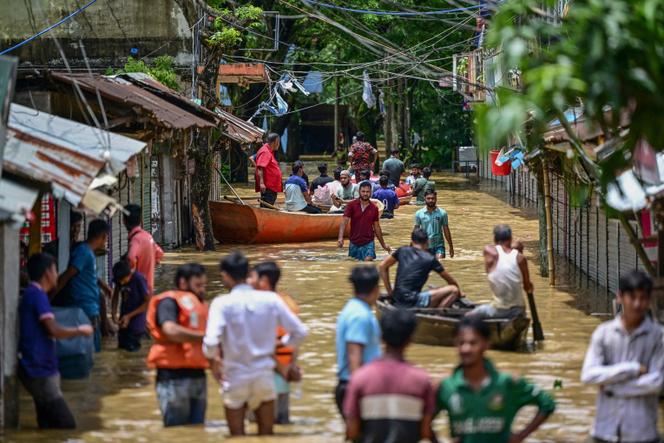


Flash floods wrought havoc in Bangladesh on Friday, August 23, as the country recovers from weeks of political upheaval, with the death toll rising to 15 and millions more caught in the deluge.
The South Asian nation of 170 million people, crisscrossed by hundreds of rivers, has seen frequent floods in recent decades. Monsoon rains cause widespread destruction every year, but climate change is shifting weather patterns and increasing the number of extreme weather events.
Much of Bangladesh is made up of deltas where Himalayan rivers, the Ganges and the Brahmaputra, wind toward the sea after coursing through India. All major tributaries of the two transnational rivers were overflowing, according to local media reports. In India's hard-hit Tripura state, more than 23 people have died in the floods since Monday.
Bangladesh's disaster management ministry said in a bulletin that its latest toll of 15 deaths included fatalities in cities along the country's southeastern coast. That included the main port city of Chittagong and Cox's Bazar, the latter a district home to around a million Rohingya refugees from neighboring Myanmar.
Areas east of the capital Dhaka were also badly hit including the city of Comilla, near the border with Tripura state in India. Nearly 190,000 others were taken to emergency relief shelters, according to the bulletin, while altogether 4.5 million people had been affected in some way.
The floods come less than three weeks after the ouster of ex-premier Sheikh Hasina, who was forced to flee by helicopter to India, her government's biggest political patron, during a student-led uprising.
Hasina's 15-year rule saw widespread human rights abuses, including the mass detention and extrajudicial killings of her political opponents. She was replaced by Nobel laureate Muhammad Yunus, who is heading an interim government facing the monumental task of charting democratic reforms ahead of expected new elections.
Asif Mahmud, a leader of the student protests that ousted Hasina, and who is now in Yunus' caretaker cabinet, on Wednesday accused India of "creating a flood" by deliberately releasing water from dams. India's Foreign Ministry rejected the charge, saying its own catchment area had experienced the "heaviest rains of this year" this week, and that the flow of water downstream was due to "automatic releases."
Hundreds of people nonetheless gathered at Dhaka University on Friday to protest India's "water aggression," featuring a banner showing Indian Prime Minister Narendra Modi delighting at the sight of drowning people.
Relentless downpours have yet to abate on the Indian side of the border, with worst-hit Bagafa village recording 494 millimeters of rain in the 24 hours to Thursday. State disaster agency official Sarat Kumad Das said most of the 23 people who have died in Tripura state were killed in landslides while a few drowned in flood waters.
Tripura chief minister Manik Saha said the situation was "still concerning" with relief efforts ongoing in the worst-hit parts of the state.
"Food is being distributed there, and we are also exploring the possibility of airlifting supplies," he said in a statement. "We are praying for everyone's safety."
Modi's Hindu-nationalist government backed Hasina's rule over her rivals from the Bangladesh Nationalist Party, which it saw as closer to conservative Islamist groups. Modi has offered his support to the Yunus administration.
